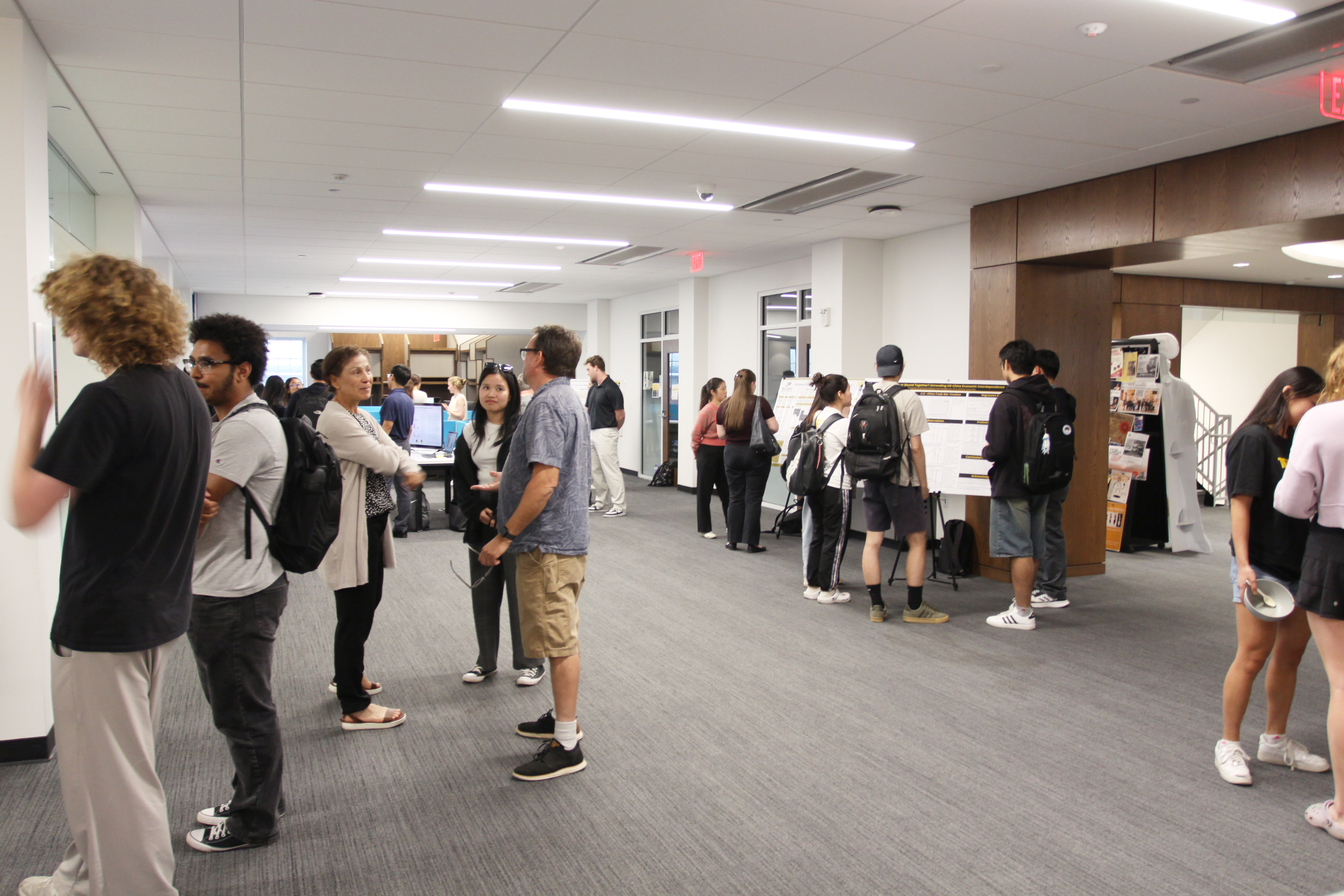Files
Download Full Text (1.3 MB)
Document Type
Poster
Publication Date
Fall 11-2014
Abstract
To understand the chemistry of the interfacial region of reverse micelles (RM), we studied RM system made with the cationic surfactant cetyltrimethylammonium bromide (CTAB), alkanol cosurfactants dissolved in cyclohexane with water core. Spectroscopic methods, specifically UV-Vis absorption of Coumarin 343 (C343) as a probe molecule, were used to determine basic properties of RM systems. However, the probe location was difficult to determine because the spectrum (absorbance), when dissolved in RM solution, didn’t match the spectra in any of the pure components. Our data suggests that the interfacial layer of RM cannot be thought of behaving only the characteristic of single one of the components; rather, it behaves as a mixture of multiple components with unique characteristics. The interfacial layer appears to have roughly three distinct regions. By combining two components at a time, our data shows that C343 is most likely to reside in the middle or outer interfacial regions, which is surprising because C343 is polar enough that it would be expect to preferentially migrate into the water core
Recommended Citation
Li, Jonathan and Bridget L. Gourley. "Probe Location within Interfacial Layer of CTAB Reverse Micelle System." Poster presented at the 2014 DePauw University Science Research Fellows Poster Session, Greencastle, IN, November 2014.



